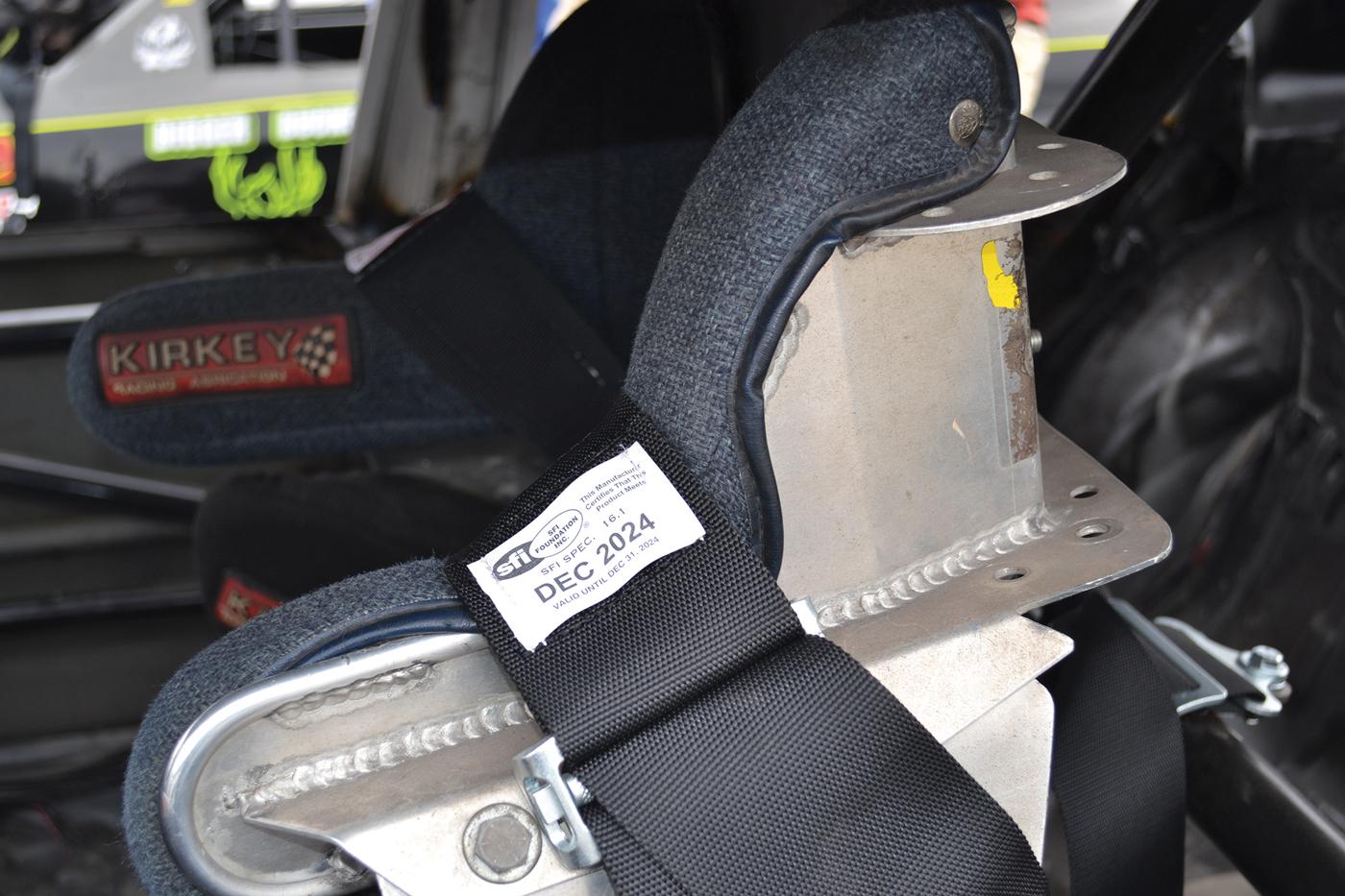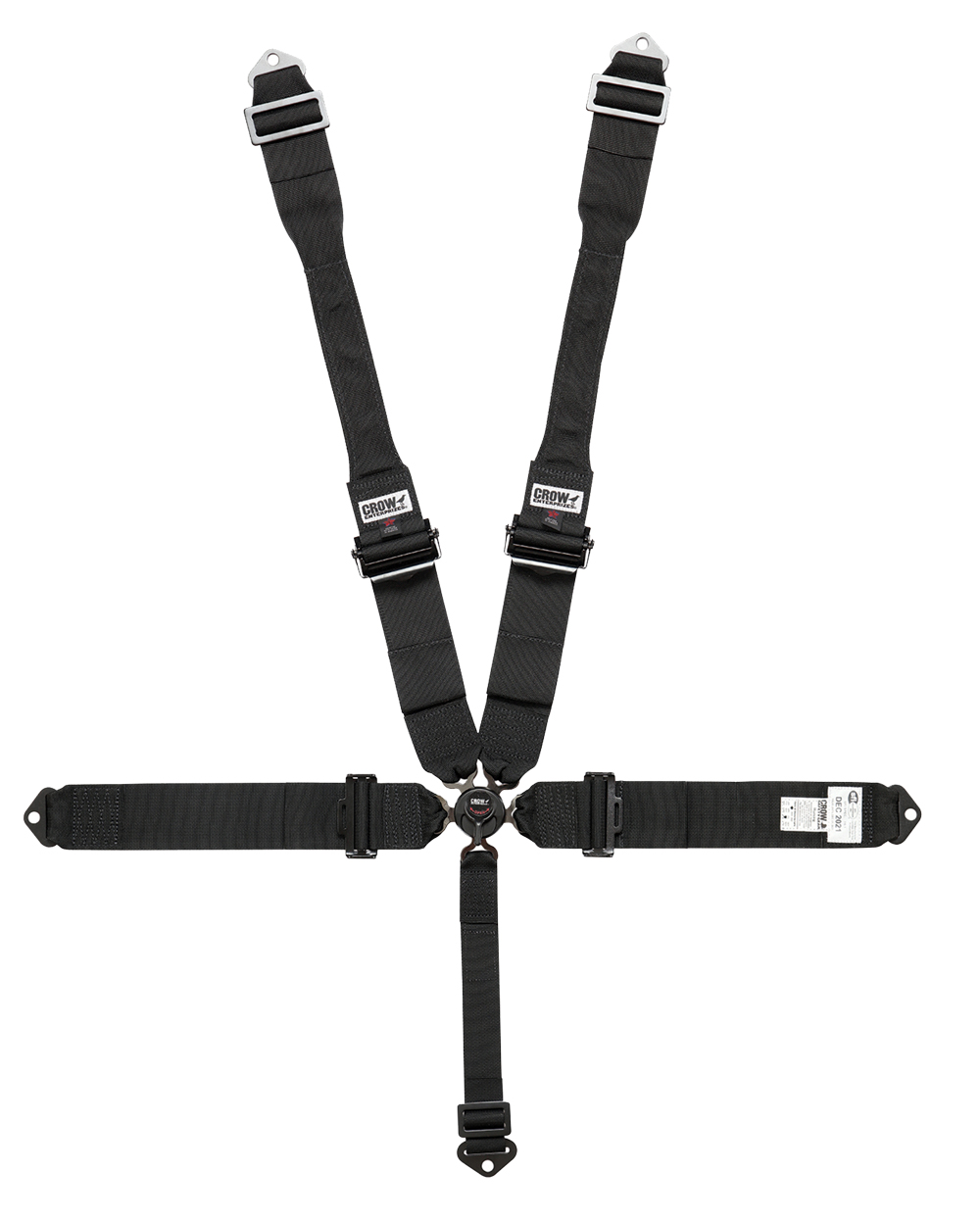Ask the Experts: Driver Safety Equipment Recertification

SFI issues manufacture date tags for harnesses twice a year, in June and December. The belts will need to be recertified two years after that date.
When applicable, recertifying can be a huge cost savings over replacement. Here’s how.
As part of its role in establishing quality assurance standards for performance and racing equipment, the SFI Foundation also sets what is essentially an expiration date for each piece of equipment it certifies. At the end of a set timeframe, typically between one and five years depending on the equipment in question, that gear either needs to be replaced or, in many cases, recertified by the manufacturer to ensure that it still functions properly and remains in compliance with SFI specifications. Many pieces of driver safety equipment qualify for the SFI’s recertification procedure; we spoke with Matthew Krick of Crow Safety Equipment in North Las Vegas, Nevada, and Eric Koup of Impact Racing in Indianapolis, Indiana, for details on how the process works and how racers can navigate it most effectively.
Racing Harnesses
“The SFI deems a seatbelt to be viable for two years,” Krick said, and the tags that Crow Safety (and other manufacturers) sew into the belts to indicate their manufacture date are issued twice a year.
“There are two different date ranges, June or December,” Koup said. “Belts made from January through the end of June will get a June tag, and those made from July through December will get a December tag. Recertification would be done two years from that timeframe.”
When it comes to harnesses, only the hardware is actually recertified. “The hardware gets checked over and analyzed to make sure there’s no corrosion, rust, or any other issues,” Krick said. “The belts are cut off and re-made to spec.”
Crow Safety doesn’t allow racers to switch out hardware for a different type, but there are certain options they can add, such as tapered shoulder belts for a head-and-neck restraint or sewn-in pads. Should Krick find any problems with the latches or other hardware, those are not repaired. “They just buy new belts.”
Turnaround for belt recertification can be two to four weeks, depending on the time of year. At Impact Racing, demand rises “as we get closer to the new dates coming out and the current tags running out, which would be June 30 or December 31,” Koup said.
For Crow Safety, “in the busy season, which is pretty much after Thanksgiving until April, it can take four weeks,” Krick said. “There’s no racing going on, so they can tear down the car, throw the belts in a box, and send them to us to recertify them. They won’t need them back for a bunch of weeks.”
In fact, Krick advised racers to wait as long as they can before sending in their belts. “Four weeks before their first race. Belts can be the last thing you put in a car. It might not be convenient, but the later you go in the year, the more apt you are to have the absolute newest date tag sewn on the belts.” Some of his customers have two sets of belts that they rotate, so there’s always a certified set of belts on hand while the other set is out for recertification.

The advantage to recertifying harnesses is budgetary. Krick said the cost of recertifying a harness is “about half the price” of a new set of belts, “or a third of the price with a cam lock.” Crow Safety will recertify belts multiple times “depending on their condition as sent in. It all depends on how they take care of their stuff.”
At Impact Racing, “a new set of belts is roughly $320, while the re-webbing process is $119.95,” Koup said. “So even with the cost of shipping, the racer is saving about $100 to $150 over the cost of new belts.” Impact will recertify harnesses “two to three times if they’re still in working condition.”
Driver Suits
SFI-rated 3.2A/10, 15, and 20 driver suits are made with a tag indicating the suit’s year of manufacture, and SFI allows them to be recertified every five years, starting with the year on the tag. Impact Racing begins the recertification process with a full inspection “to make sure they’re still in good working condition, that there are no tears within the fabric, and that they haven’t been involved in any type of fire,” Koup explained. “Tears we can patch over and repair, typically. But if there’s any sign that there has been any type of fire involved with the suit, it can no longer be recertified.”
Impact Racing’s recertification process for a suit can take two to three weeks, Koup said. A suit can be recertified only twice, and Impact will not recertify a suit made prior to 2012. “It’s a lifespan issue for the Nomex,” he explained. “After all those years of use, we don’t know how the Nomex would potentially react.”
Recertifying a driver suit has a big cost advantage over replacement, Koup said. “A custom SFI 15 or 20 suit can run $3,000–$4,000. Even an off-the-shelf suit can be $2,000–$3,000. The recertification for them is currently about $90. Ninety dollars to give the racers that additional timeframe is definitely a huge, huge, benefit.”
Koup advised racers to “reach out to the company that manufactured your gear to find out what their proper recertification processes are.” And though it sounds obvious, he reminded racers to “please include your contact information—your name, address, and phone number—when you send equipment to us. We have had people send stuff in that doesn’t have any contact information, which can definitely delay the process, as we have to wait for them to call us to note that it was their product.”
SOURCES
Crow Safety Gear
crowsafety.com
Impact Racing
impactraceproducts.com
 MEMBERSHIP LOGIN
MEMBERSHIP LOGIN JOIN PRI
JOIN PRI


